- Hotline: (+84) 938 520 379
- Email: info@eurorack.com
EURORACK MECHANICAL JSC
Pallets are one of the essential warehouse support devices, playing a crucial role in optimizing transportation and storage processes within the logistics supply chain in general and warehouses specifically. Pallets are considered as a base that allows forklifts or specialized equipment to move goods easily. The importance of pallets lies not only in enhancing logistics efficiency but also in providing the best protection for goods.
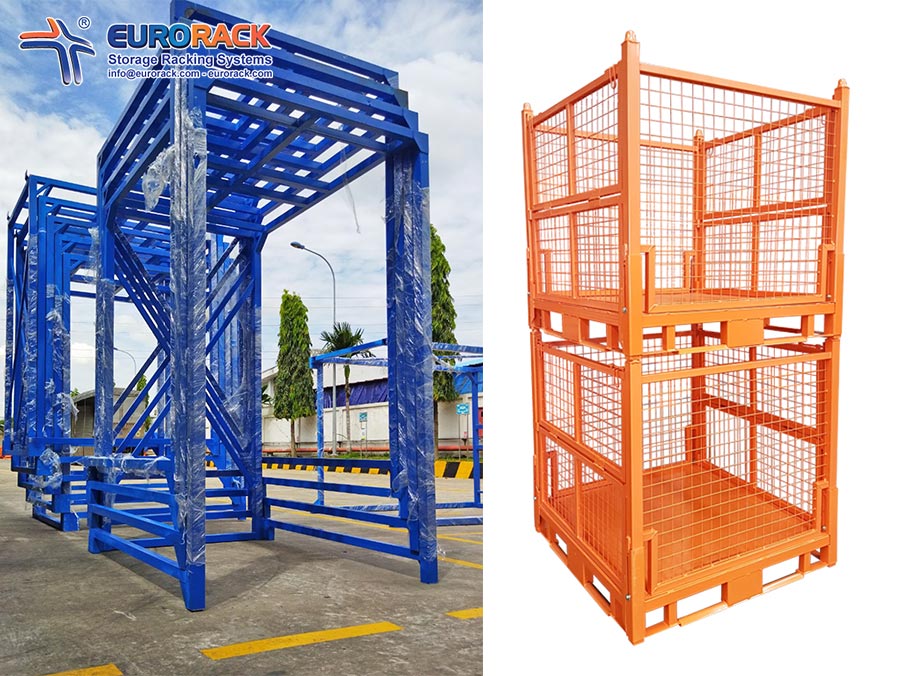
Wooden pallets are the traditional type, widely used across industries ranging from food to petrochemical. The advantage of wooden pallets is that users can select them based on their budget, as the price varies depending on the type of wood, ranging from low to medium to high. Additionally, it is relatively easy to customize the size of the pallets to match the goods. However, the biggest drawback of wooden pallets is their susceptibility to decay and termite damage, leading to a shorter lifespan. Therefore, wooden pallets are not the best choice for specific types of warehouses, such as cold storage or high-humidity warehouses.
Plastic pallets are known for their superior durability, high load capacity, and suitability for use in various harsh environments such as cold storage or chemical warehouses. Their most significant advantage is their recyclability, effectively reducing plastic waste in the environment. However, drawbacks remain, making many businesses hesitant, including the high initial investment cost and the impracticality of repairing them when damaged.
Metal pallets are the most durable and load-bearing option available, suitable for use in all environments, from wet to dry conditions, without concerns about rust or decay. The manufacturing process for metal pallets involves multiple stages, from selecting steel materials to surface treatment with specialized solutions and coating with a protective layer (such as powder coating or galvanized coating, depending on specific needs). As a result, the average lifespan of metal pallets can reach decades. However, their heavy weight can lead to increased transportation costs.
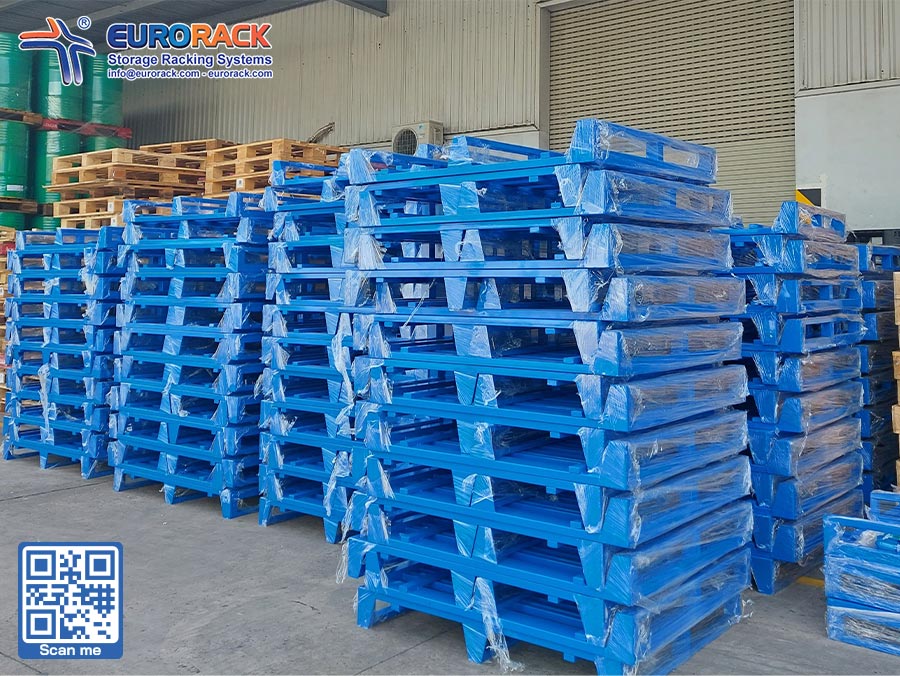
In the US market, the most commonly used pallet size is 48x40 inches. This size allows all packaged goods in the food and retail industries to fit neatly on the pallet, avoiding waste or safety concerns during storage and transportation. GMA pallets (following standards set by the Grocery Manufacturers Association) ensure safe and efficient product transportation between locations.
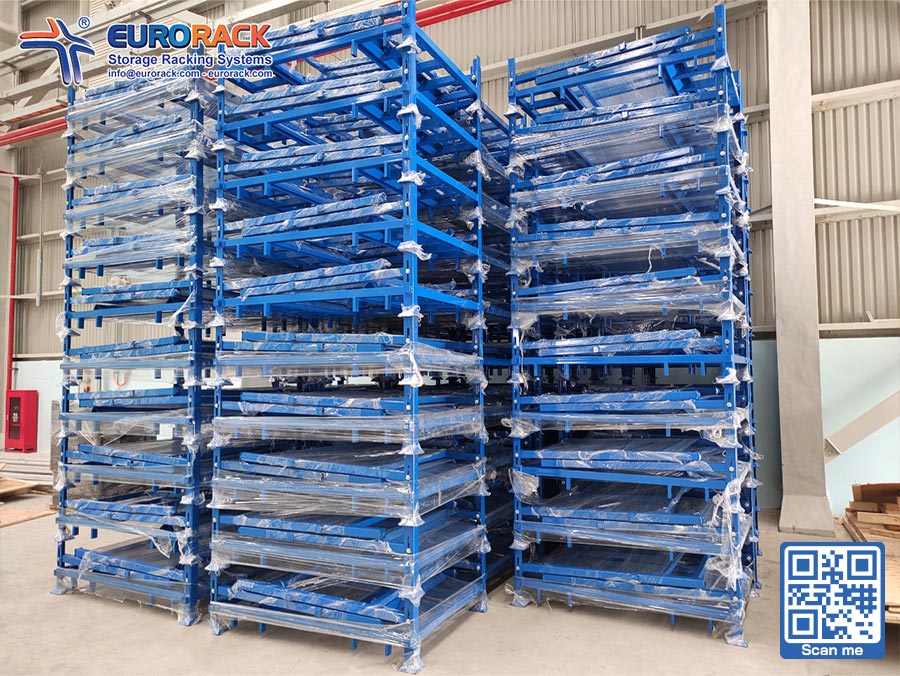
In Australia, pallets typically measure 1165x1165 mm, suitable for the production and storage of goods in international warehouses. These square pallets, often made from softwood or hardwood, fit perfectly into RACE containers on Australian railways, optimizing goods handling processes in logistics centers.
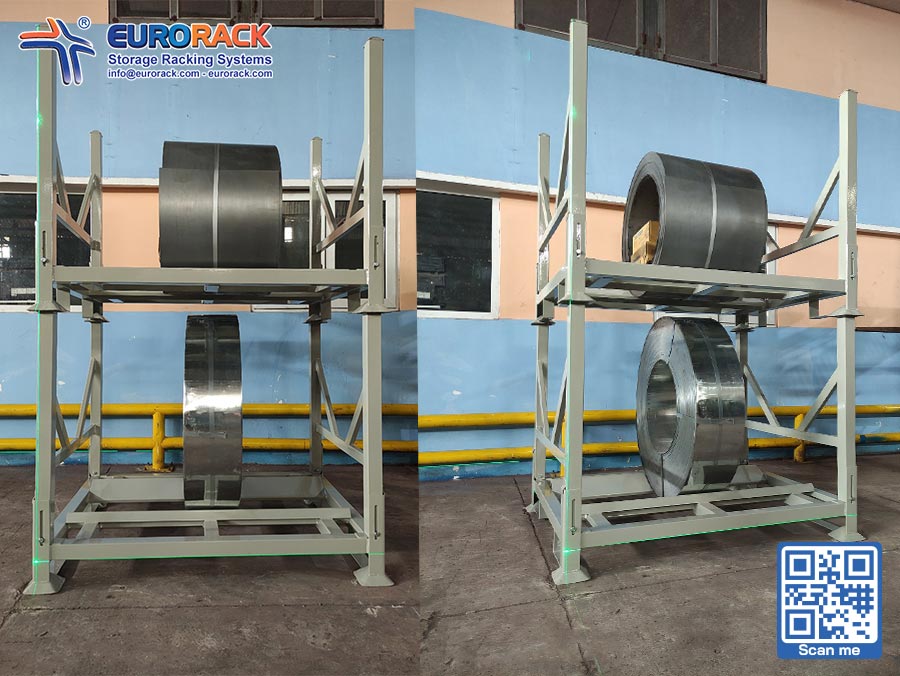
In Canada, most pallets adhere to GMA standards but are often customized to meet the diverse needs of industries like agriculture and export. Many businesses in Canada focus on investing in high-quality pallets to minimize risks and handling time, ultimately increasing profitability.

When selecting pallets, businesses need to determine the weight, dimensions, and characteristics of their goods to decide on the most suitable pallet type to optimize costs. Failing to clearly define these factors can lead to wasted money and warehouse space or cause safety hazards if goods exceed the pallet's capacity.
Defining the usage environment is critical to determining which pallet is best for your business. For warehouses with low temperatures or high humidity, plastic and metal pallets are the most suitable options. For more extreme conditions, such as frequent transitions between cold and regular warehouses or outdoor exposure, metal pallets offer the highest adaptability.
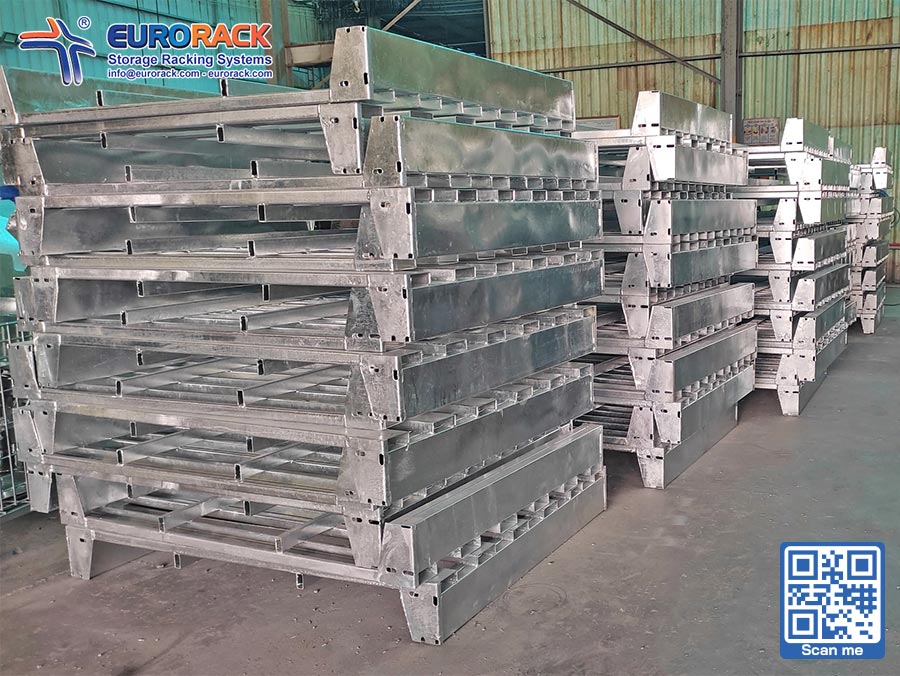
Initial investment cost is a significant factor that businesses consider, as it can impact the company's financial operations. However, choosing overly cheap pallets may negatively affect their lifespan. To make the best decision, businesses should address the three criteria outlined above by Eurorack to assess their practical needs and financial resources. Choosing a reputable manufacturer for advice and recommendations is also essential.
Eurorack pallets support a load capacity of up to 1500 kg, accelerating goods handling and rotation processes. Moreover, they help maximize storage space in warehouses or on transportation vehicles.

By using premium imported steel materials combined with an ISO 9001-compliant production process, Eurorack creates superior-quality pallets that significantly reduce repair and replacement costs.
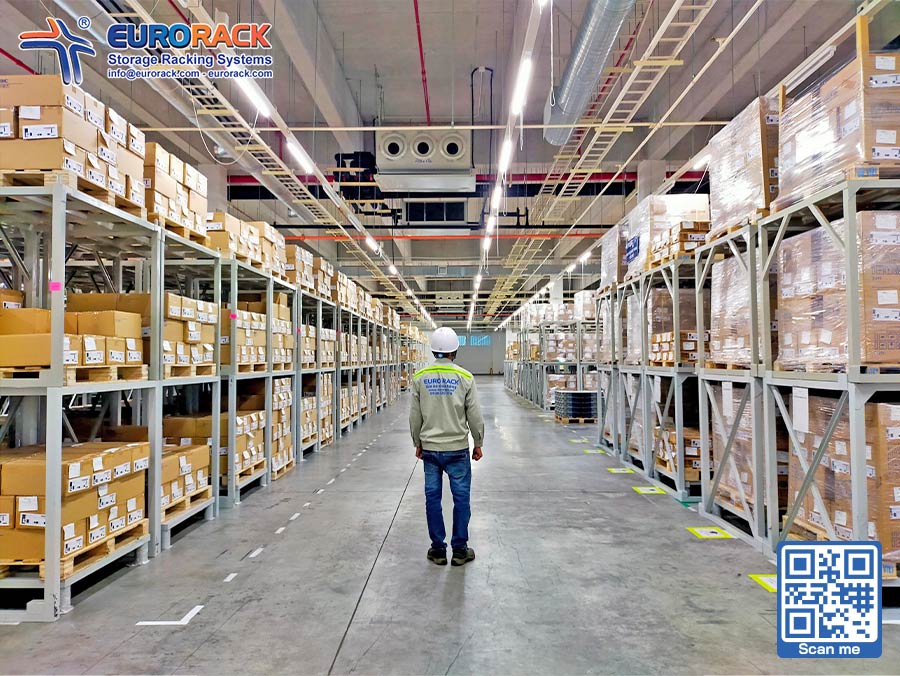
Eurorack has optimized production costs by investing in modern, automated manufacturing systems. This allows them to produce large quantities of consistent-quality products in a short time, offering competitive pricing for each item.
Pallets are indispensable in warehouse management and operations, enhancing efficiency and cost savings within the supply chain. Investing in high-quality pallets not only increases profitability but also protects assets and ensures employee safety, contributing to sustainable business growth.
If you require detailed consultation, feel free to leave your contact information.